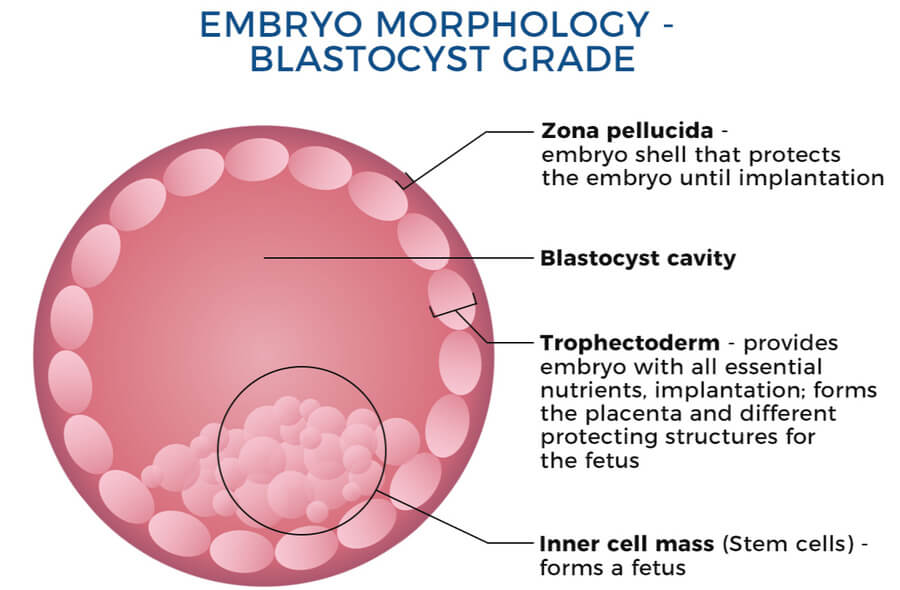
Embryo quality can be rated combining three indicators – morphology, kinetics and genetics. The ability of an embryo to be implanted by 25% depends on its morphology, 25% on kinetics and 50% on genetics.
We'll talk about embryo morphology today.
Embryo morphology is visual embryo assessment by cell count and size and fragmentation amount in an embryo.
Blastocyst development and stage status (Gardner et al. 1999):
- BC1 – Blastocoel cavity less than half the volume of the embryo
- BC2 – Blastocoel cavity more than half the volume of the embryo
- BC3 – Full blastocyst, cavity completely filling the embryo
- BC4 – Expanded blastocyst, cavity larger than the embryo, with thinning of the shell
- BC5 – Hatching out of the shell
- BC6 – Hatched out of the shell
From the second blastocyst development stage (BC2), it is possible to rank inner cell mass and trophectoderm (Gardner et al. 1999):
Inner cell mass quality:
- A – Many cells, forming cohesive layer;
- B – Few cells, forming loose epithelium;
- C – Very few large cells.
Trophectoderm quality:
- A – Many cells, forming cohesive layer;
- B – Few cells, forming loose epithelium;
- C – Very few large cells.
Follow our publications! Next time – the story of embryo kinetics.

 en
en lv
lv ru
ru lt
lt se
se no
no

